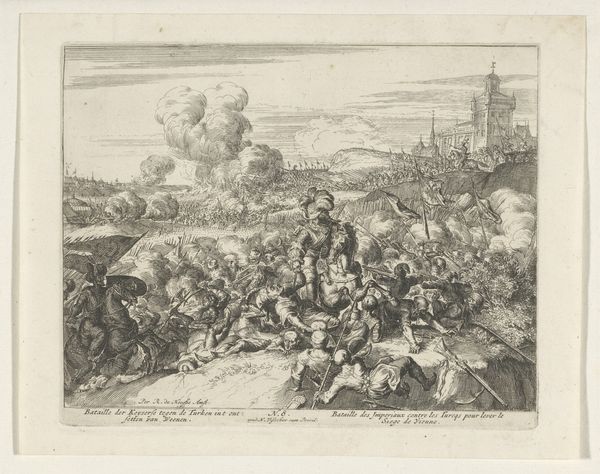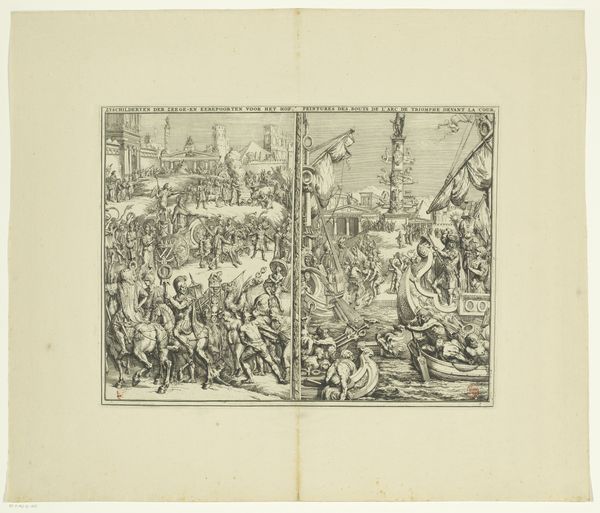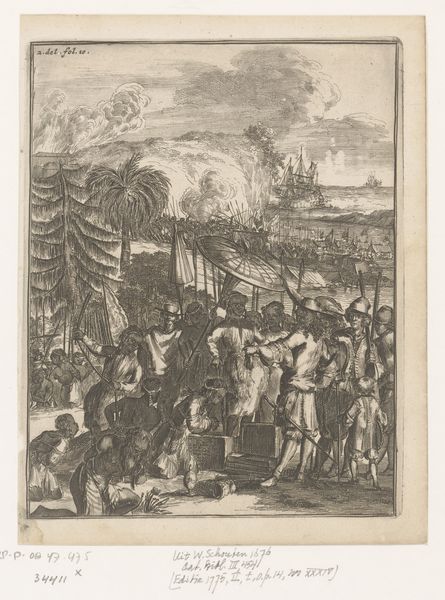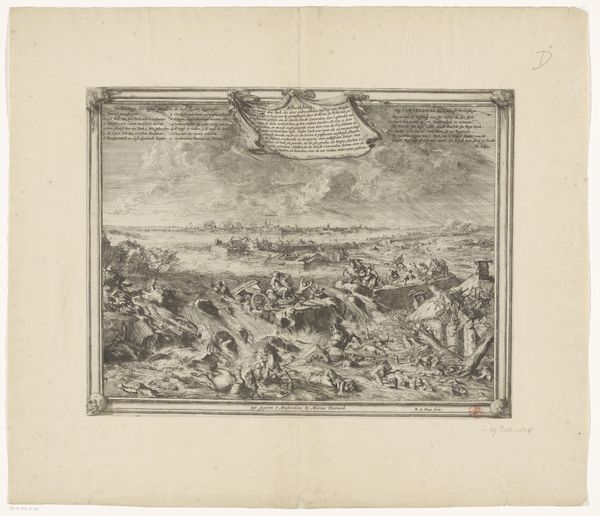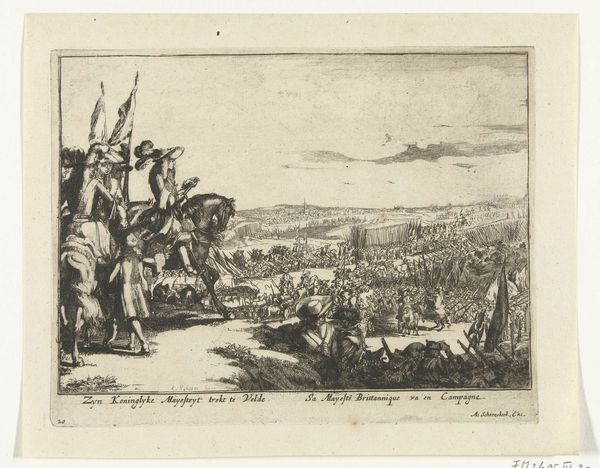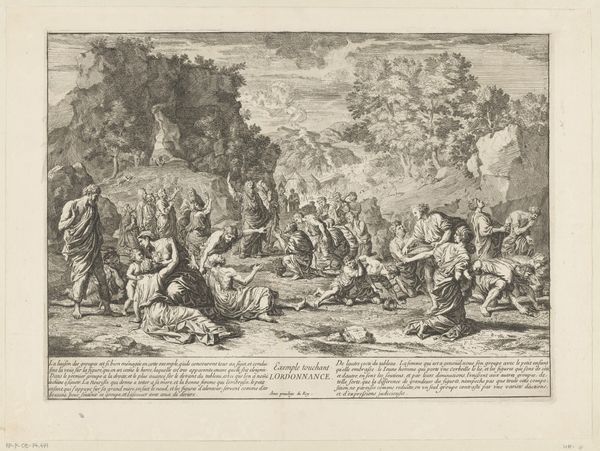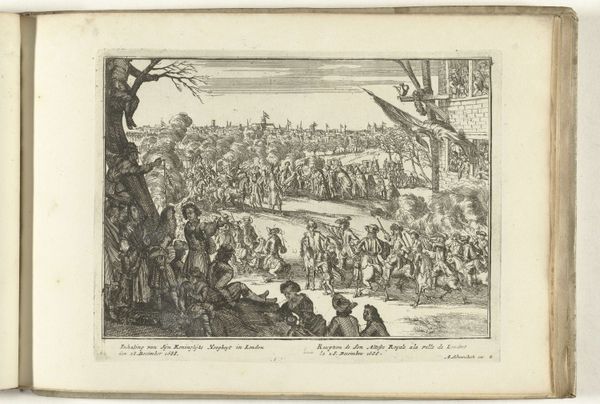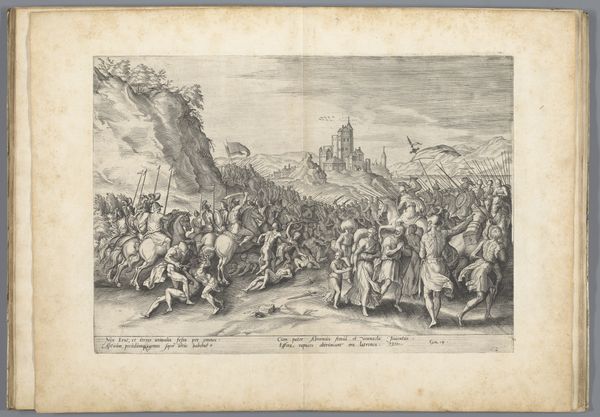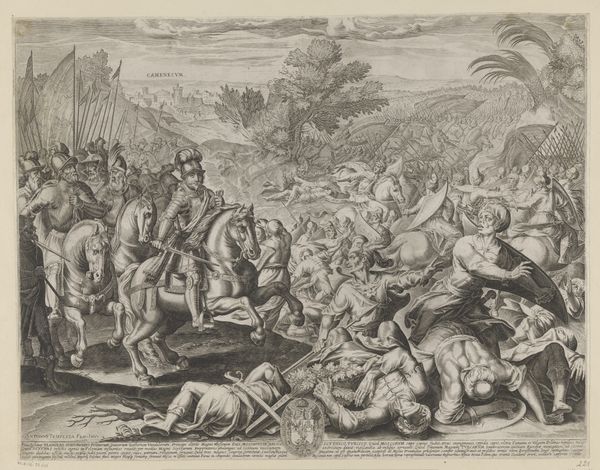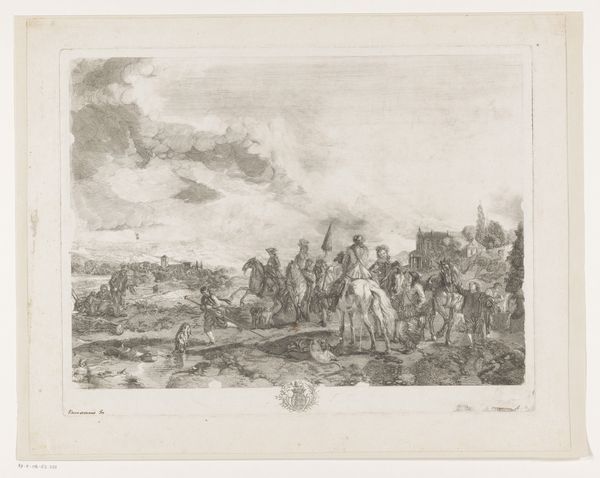
print, engraving
#
narrative-art
#
baroque
# print
#
old engraving style
#
history-painting
#
engraving
Dimensions: height 258 mm, width 303 mm
Copyright: Rijks Museum: Open Domain
Editor: Here we have Hugo Allard's 1691 engraving, "Willem III verslaat Jacobus in Ierland bij de Boyne, 1690," which depicts William III defeating James in Ireland. It's incredibly detailed and evokes a sense of chaotic energy. How do you interpret this work within its historical context? Curator: This engraving offers us a glimpse into the complex interplay of politics and imagery in the 17th century. Beyond just illustrating a historical event, the Battle of the Boyne, it functions as a piece of political propaganda. How do you think the artist positions William III in relation to James II? Editor: William definitely appears as the strong, victorious leader, centralized and actively in battle. Jacobus feels... weaker. Curator: Precisely! This portrayal reinforces the narrative of William’s rightful claim to the throne. Think about who commissioned this piece and its intended audience. It served to solidify William’s power and legitimacy, particularly amongst those who might have questioned the Glorious Revolution. Consider the broader implications of representing warfare in print. How did the proliferation of such images shape public opinion? Editor: I never thought about the printing process being part of the bigger socio-political agenda. So these prints helped craft and solidify the Williamite narrative and justify a specific political order. The 'history' might even be skewed. Curator: Exactly. And we have to recognize that these kinds of visuals participated in and further reinforced cultural memory. Looking at it now, knowing the intent helps us better grasp the political messaging woven within the artwork. It really emphasizes the public role that art serves. Editor: I will definitely look at historical artwork with fresh eyes now! I used to see artwork of this period only in terms of style or artistic skill. Now, I am aware of the need to recognize political motives and agendas behind the art. Curator: And it’s through understanding these socio-political forces that we can fully appreciate the layers of meaning embedded within it.
Comments
No comments
Be the first to comment and join the conversation on the ultimate creative platform.
